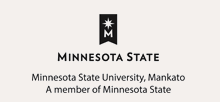-

Out of Chaos: Reflections of a University President and His Contemporaries on Vietnam-Era Unrest in Mankato and Its Relevance Today
James F. Nickerson
Out of Chaos: Reflections of a University President and his Contemporaries on Vietnam-era Unrest in Mankato and its Relevance Today is a collection of personal reminiscences that provide a glimpse into what Mankato was like during the 1960s and 1970s. The book was created by Dr. James F. Nickerson, former Mankato State College president, with input from a variety of graduates, faculty, administrators and citizens who were witnesses to these local events. It is by piecing these stories together that the reader gets an understanding of this dynamic time period and how one person can make a difference in the outcome of events.
Minnesota State University, Mankato will observe its 150th anniversary as an institution of higher learning in 2018. Out of Chaos, represents a significant time in University’s past, and so to coincide with other Sesquicentennial undertakings, it is being reprinted as a Sesquicentennial Edition. Out of Chaos has also been selected as the 2017 Common Read book. As Minnesota State Mankato’s Common Read book for 2017, Out of Chaos will support the commemoration of the Sesquicentennial by allowing campus and community readers to explore the University’s remarkable history through book discussions, thought-provoking programming and other associated educational experiences.
-

Where the Clouds Meet the Water
Kimberly E. Contag and James A. (Jim) Grabowska
Where the Clouds Meet the Water follows the historical journey of the German Ecuadorian widower, Ernst Contag, and his four young children from their home in the South American Andes to Nazi Germany in 1942. Blacklisted as an enemy alien, Ernst Contag and his children are forcibly repatriated to the country of Ernst's grandparents as part of a diplomatic exchange arranged by the United States' State Department and cooperating countries. In Nazi Germany, Ernst and his children must deny their Ecuadorian past and learn to live as Germans. The Contag family strives to keep the ray of hope in their hearts when the Nazi oath of "blood and honor" leads to fear, abandonment, and death. The children and their father navigate an ever-shifting horizon as they face despair and fear in internment and refugee sites, separation, devastation and loss in Germany (1942-45), hunger and hopelessness in post-war France (1945-46), and hostility in their own Andean homeland. Through it all, the strength of family serves as the glue that holds them all together. The story is based on historical research conducted in libraries and archives on three continents, interviews with survivors of the Ecuadorian blacklist, personal records and official documents submitted to the authors by survivors and their families. Where the Clouds Meet the Water will intrigue readers of all ages who are moved by coming-of-age stories, and fascinated by World War II history and survivor stories.
-

Mankato State University: The Second Century: The First Twenty-Five Years, 1968-1992: An Interpretative Essay
Claire E. Faust
Donald Youel, in Mankato State College - An Interpretative Essay, commented on the development of this institution for its first one hundred years. He did not chronicle each event, but rather provided the reader with an understanding of what happened and what it meant for the College and for society. He organized this essay from different perspectives: "the developing program, the enrollment, students, the state governing board, administration and faculty." He made the point well that "Mankato's story is a representative instance of America's dream that opportunity means, fundamentally, educational opportunity."
Mankato State University, the Second Century - the First Twenty-Five Years, is also an interpretative essay which is written from similar perspectives. The purpose of this essay is to review some of the events that occurred at Mankato State during the first quarter of the second century, and to discuss how this institution has addressed the challenges to higher education in a changing world.
-

Those Barracks Babies
Marcia Baer
This is a book about how a group of folks, in a time long ago, living in a small Minnesota college town, celebrated life. It is a story of reflection. Reflection into the past when times and people were - shall we say - different. The people were veterans returning from the war, the time was the middle of the century-1947 through 1964. The place was Mankato State College in Southern Minnesota. This is the story of "The Barracks Babies." After you read these letters, look at the fading photographs, you'll know this is not the '90s. What makes these people different? "Well, for one thing," explained Margaret Philip, Assistant Professor of Psycholgy at MSU, "all of these people seemed to be focused on a goal - dedicated to becoming professionals. Most knew they were going to be teachers from the first day, so they worked hard to get there quickly. Today students don't know what profession they will choose or whether they'll even get a job after college." Yes, it's obvious the Barracks Babies were highly motivated to achieve. After being in the service and surviving the war, they were simply appreciative of being alive. There was a spirit of excitement about their new life -a wife - a family - a home - an education - the prospect of earning a good living in the future. It didn't matter if living conditions weren't the best for a few years - they saw an end to it. After all the rent was cheap! And, they never lost their sense of humor. Most (but not all) of the students were male. Especially in the early days of the Barracks, the wives did not work but stayed home to raise the family and give moral support to their husbands and each other. In fact, they were frequently awarded their Ph.T. (Putting Him Through)! here was quite a bit of "no-cost" socializing - and all were in the same financial boat. No one had to compete or climb the status ladder. "There was definitely a spirit of cooperativeness," said Philip. She also noted they tended to show originality in problem solving behaviors - in other words, learning how to "make-do" with nothing. After reading the stories, Mrs. Philip felt that "the most amazing thing about them is that 40 years later these folks had such clear recollections. I believe that shows they were feeling good about what they were doing and they processed it into long term memory!" Turn now to those days and enjoy some of the most wonderful true-life stories you'll ever read. It's Those Barracks Babies ...
-

Mankato State College: An Interpretative Essay
Donald B. Youel
The account of Mankato State College which follows is not a chronicle of events. It is rather a seeking for understanding of what happened: what led up to, what was part of, what followed, of what this part and that meant - for the College and for society. It is thus an essay. The tactic has been to look at the account from different perspectives: the developing program, the enrollment, students, the state governing board, administration and faculty. Inevitably such a procedure means going over the historic events again. But since there are always many facets to each significant happening this may be an aid to understanding. A theme emerges in these first notes-the dream of opportunity through education - and its variations inform both whole and parts [p. 12].
Printing is not supported at the primary Gallery Thumbnail page. Please first navigate to a specific Image before printing.


